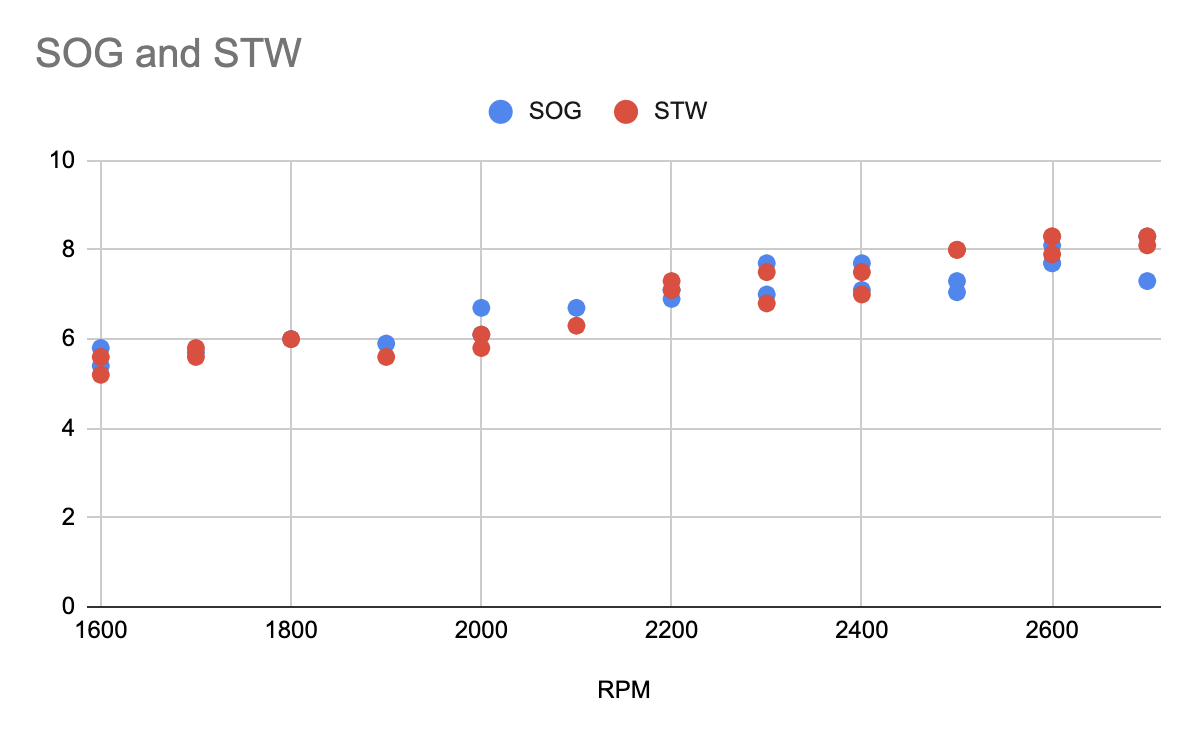Hooray! The break-in is finished! Let’s go sailing! But before I say more…
Crew Request!
I am still quite shorthanded for both the PV->Cabo (4 days from March 20) and Cabo->San Diego (14 days from April 10) legs. Originally I thought I had a lot of people for the bash, but everyone is backing out. Except Dave. Dave, you’re awesome.
Dave, and hopefully Sarah, his wife, will join me for the first part from Puerto Vallarta to Cabo. This means I have a full cabin left! Tickets are cheap -- about $400 round trip. That plus a little bit for food and you’re good to go.
On the bash, I only have two people now. I need three, ideally four. I’ll be reaching out for volunteers. Airfare southbound is included!
Please reach out if you have interest.
The break-in
It was a great trip around Bandaras Bay. We saw a few whales. The boat performed flawlessly by engine.
There are a few problems, all of which can be fixed fairly easily:
- The propeller pitch is incorrect. We need to repitch the props so they are grabbing less water on each revolution. The engine max RPM turned out to be around 3100, while the redline is 3600. One inch of pitch change is supposed to add 300 RPM to the upper end, and so 3400 is probably the right number.
- There is a small water leak from the starboard vented loop. This is because I never added a vent hose. I thought the valve would stop all flow, but it doesn’t -- there is a small drip, so I have to install that hose.
- There is a small fuel leak from the engine damage. I think this is a very small leak but I want to fix it so there is no diesel in otherwise really clean engine room. I already have all the parts.
On the plus side, we were able to cruise around all of Bandaras Bay, visiting La Cruz, and Yelapa for a late breakfast and late lunch.
Performance
 Here are the performance numbers we got from the break-in (click on the graph to enlarge). Note that the boat top speed is now just over 8 knots, and we couldn’t test above 75% of max RPMs so I don’t have numbers there. Once we repitch, all of these speeds will be shifted over a little, I think. I’ll have to take new measurements. SOG is probably more accurate than STW since that depends on probably random currents.
Here are the performance numbers we got from the break-in (click on the graph to enlarge). Note that the boat top speed is now just over 8 knots, and we couldn’t test above 75% of max RPMs so I don’t have numbers there. Once we repitch, all of these speeds will be shifted over a little, I think. I’ll have to take new measurements. SOG is probably more accurate than STW since that depends on probably random currents.
The other exciting info is that even on one engine we can do 6 knots, giving a phenomenal range, and if we want to do 7, 7.5 or even 8, at the cost of fuel, that’s possible. This is a far cry from the 4.5 knots we did on one of the older Yanmar engines, or around 6 knots with both engines.
Complaints
These engines are not without flaws, so I’m going to air them here:
- Exhaust. The exhaust options are pretty lousy -- I want a crossover with another 18 inches of rise to prevent water from ever going into the engine. The stock exhaust riser about 45% of the exhaust creating a lot of back pressure.
- Panels. The control panels don’t have any oil pressure or temperature gauges. I suppose I could have asked for better panels, but they weren’t standard. Worse yet, all the wiring isn’t even tinned. What were they thinking, you might have to replace them periodically? How long will these hold up?
- Belts. Belt replacement is hard. Let’s hope it doesn’t ever fail, but you have a lot of work to do to get access to the belt. The water cooling tubing has to be removed somewhere to completely remove the belt. Let’s hope it doesn’t fail in heavy seas.
- Alternators. Internally regulated alternators “float” and charge at the same voltage, too high for most lead-acid batteries -- 14.2 volts. There is no option for an external regulator, so I’ll have to pull these alternators, modify them for external regulation, and install an external regulator.
- Water pump. The impeller is in a tough to reach spot for me. There was an option to move the pump to the rear of the engine but I didn’t realize how bad it was.